Many gardeners prefer to plant garlic for the winter, it is very convenient. But not everyone knows how to prepare planting material and choose a planting time. After all, crop yields directly depend on growing conditions and proper agricultural technology.
Content
- 1 Selection of planting material
- 2 When to plant winter garlic
- 3 How to choose a site
- 4 Crop rotation
- 5 Preparation of beds and planting material
- 6 Planting winter garlic in the fall
- 7 Growing and caring for winter garlic
- 8 Harvesting
- 9 Disease
- 10 What to do if there is no time for leaving?
- 11 Features of winter garlic and additional care methods
- 12 Conclusion
Selection of planting material
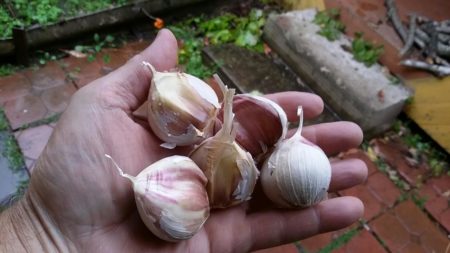
There are two varieties of garlic, one of them is a shooter, and the second is not a shooter. The first can be propagated with cloves and bulbs (garlic seeds). In the first year after planting, different sized cloves grow from bulbs. And only next year you can collect a full crop of them. The second can be grown only from the teeth.
Productivity also depends on the quality of planting material, therefore, before planting, it undergoes strict selection. To get a decent result, you need to follow a few rules:
- only select a variety zoned for the region of cultivation;
- crooked, small teeth should not be planted, they will not be able to form large heads, teeth from 3 to 4 centimeters in length are best;
- do not plant teeth with signs of disease, damage;
- choose only fresh planting material;
When growing, you need to consider that if for several years to grow the same variety with teeth, it will degenerate, and will become smaller. Therefore, once every 2-3 years it is propagated with the help of bulbs. Their cultivation is no different from growing from the cloves. Regardless of the experience of the gardener, it happens that the garlic plantings freeze. In order not to lose planting material, many agronomists leave a small number of bulbs stored for the winter in the basement. In case of freezing, the bulbs are planted in the soil in the spring, and in the fall, teeth grow out of them, which can be planted for the winter in the same year.
When to plant winter garlic
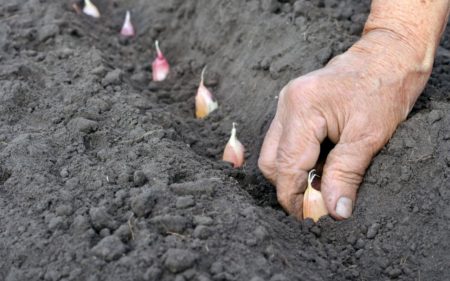
Planting time depends on the region of cultivation, as well as weather conditions directly this fall. In the middle regions of the country, planting dates range from mid-September to the end of October. In the south, work is carried out approximately in November, and in the north of the country it is better to plant it in early September. The main thing is to calculate the landing time so that before the onset of cold weather 20-30 days remain. During this period, the teeth manage to take root, but do not have time to germinate. Some gardeners plant garlic on the lunar calendar. However, you need to know, after which it is better to plant it.
How to choose a site
Garlic is not a particularly demanding crop, but it will grow poorly in shaded areas. Therefore, it is better to choose a sunny area. For the onion family, it is advisable to choose fertile sandy loam or loamy soil with low or neutral acidity. High humidity will adversely affect the culture and may cause rotting of the garlic heads. For this reason, it is better to plant it on the plains or hills with deep bedding of soil water. It should also be borne in mind that the root system of garlic is poorly developed, it is located at a depth of 20-30 cm. Therefore, the plant does not have the ability to reach the beneficial elements and moisture located in the depths of the soil.
Crop rotation
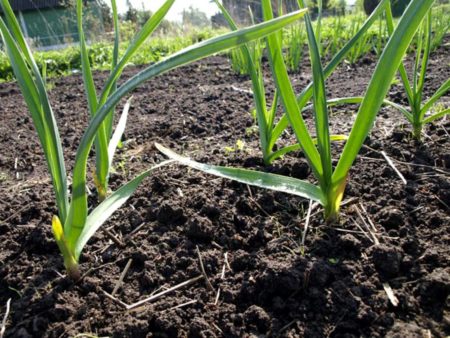
Equally important is the observance of crop rotation rules. It is best to plant garlic where green manure used to grow; these include beans, peas, mustard, clover, oats and alfalfa. Also, high yields are harvested in those areas where solanaceous crops, root crops, and pepper used to grow. Pumpkin pumpkins are good precursors, especially if they were fertilized with manure, and he managed to decompose and saturate the soil with the most necessary substances.
In no case should you plant garlic where onion crops grew. On this site it will be possible to grow it only after 3 years. During this time, the soil will have time to recover and be saturated with useful substances.
Preparation of beds and planting material
The beds begin to cook after harvesting early ripe crops, no later than 4-5 weeks before planting. If the site is heavy clay soil, it is loosened using river sand. You can also make tyrsu or compost. If the soil is sandy and excessively light, then it is heavier, adding clay soil. At elevated pH values, acidity is reduced by adding wood ash or lime. The width of the beds should be no more than one meter, and a height of up to 20 centimeters.
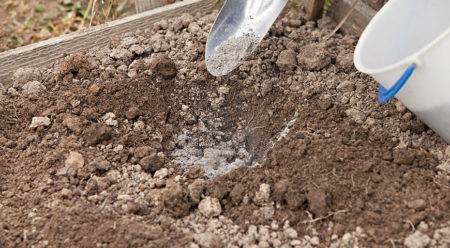
In 2018, organic substances are mainly used to fertilize the beds for planting winter garlic in 2018. Great for:
- rotted mullein;
- peat compost;
- garden compost;
One meter use from 1 to 4 ten-liter buckets of organics, depending on the condition of the soil. Fertilizers are applied when digging the site. You can also fertilize the soil with soot or wood ash, these substances will saturate the soil with phosphorus and potassium. On 1 m2 you will need up to 1 liter of substance.
Some gardeners use mineral fertilizers and add superphosphate with potassium salt under winter garlic. On 1m2 add 30-45 grams of superphosphate and 15-25 grams of potassium salt. The amount of fertilizer is calculated based on the condition of the soil.
Do not do without the processing of planting material. To destroy microorganisms and spores of the fungus, the teeth are soaked in a weak solution of manganese or 1% copper sulfate for 15-20 minutes. Buns do not need pre-treatment.
Planting winter garlic in the fall
For 14-21 days, the heads are sorted out, selecting the best for planting. After, put in a cool dry place with a stable temperature from +3 to +5 degrees. A few days before landing, it is disassembled into teeth. Landing work is carried out in autumn in dry, calm weather. It is better to choose a two-way planting pattern, row spacings should be between 35 and 45 cm wide. The teeth are laid out at a distance of 10-14 centimeters, you do not need to press them into the soil, they should simply be laid vertically in the groove, and then sprinkled with earth.
Experienced agronomists recommend that the soil be mulched from above; humus or peat can be used as coating material. It is poured with a layer of about two centimeters. Such a procedure will help maintain heat and protect garlic from freezing, and in the spring it will contribute to better warming of the soil, and help retain moisture.
Growing and caring for winter garlic
Like any crop, garlic needs regular watering. It is especially important to provide moisture at the time of emergence of shoots, as well as during the formation of the head.
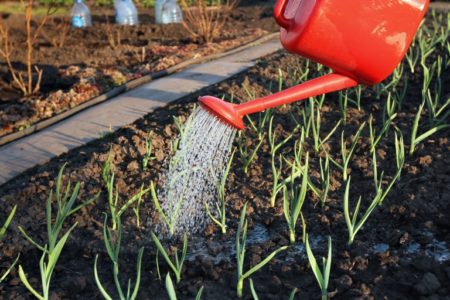
With timely watering, the heads grow large and juicy, with a bright rich taste. If garlic is intended for storage, then a month before harvesting, watering is stopped. If it is planned to plant or process it, then you can water it until the harvest.As for feeding, this is done only once and usually immediately after disembarkation. In varieties that produce arrows, they must be broken off, they are removed when they reach 15 centimeters in height.
Some to save space on garlic beds sow dill for the winter. And after winter, both garlic and dill will rise. Of course, weeding them will be harder, but there will be an opportunity to get a double crop. Garlic itself reacts positively to such a neighborhood and, if properly looked after, grows tasty and large. It is advisable to loosen the beds throughout the growing season. You also need to remove weed in time.
Harvesting
Harvesting winter garlic can begin when the stalks fall, and the aerial part of the plant turns yellow. This usually happens in late July and early August. In order not to miss the moment, leave a couple of garlic arrows, the signal about the need for harvesting will be the opening of inflorescences with ripened bulbs. Delayed harvest threatens the decay of garlic heads into cloves and the loss of presentation of the plant.
They dig out the garlic, leaving the whole neck with their whole heads when pruning, they don’t water before harvesting, the soil should be quite dry. Then it is dried well, if done correctly, then the onions rustle when poured. Store the crop in a cool room, the humidity in it should not exceed 50-70%.
Disease
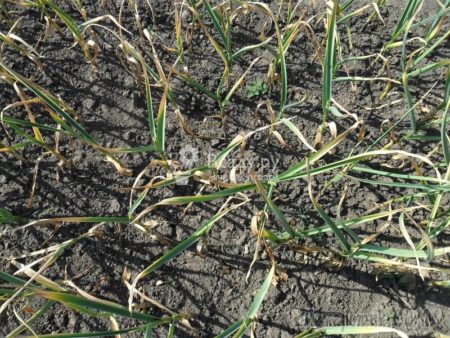
In violation of the rules for collecting and storing the crop, garlic can be affected by bacteriosis or penicillium rot of the donut. The first signs of the disease are yellowing foliage, after the whole ground part of the plant dies. Also, the culture can get rust, it manifests itself in small specks of red color around the entire perimeter of the green mass, with time the spots merge with each other. For the treatment of rust, plantings are treated with fungicides, a 0.4% solution of Oxychoma or 0.3% Bravo will perfectly cope with the disease. Repeat the treatment several times, observing the dosage, the interval between sprayings should be at least 7 days.
What to do if there is no time for leaving?
Many plant vegetables in the country, respectively, they can take care of them only on weekends. With rare watering, you do not have to wait for high yields. What to do if there is no way to regularly moisten the soil? In this case, it is recommended to mulch the beds, the mulch will retain moisture in the soil and help grow garlic large and juicy. As a mulch in the fall, organic matter or fallen foliage are perfect. To prevent it from being dispelled by the wind, branches are laid on top.
Planting and care in the open field for winter garlic largely depends on the region of growth. Especially in need of watering garlic, which is cultivated in the southern regions. Winters are not snowy there, and there is not so much rainfall.
Features of winter garlic and additional care methods
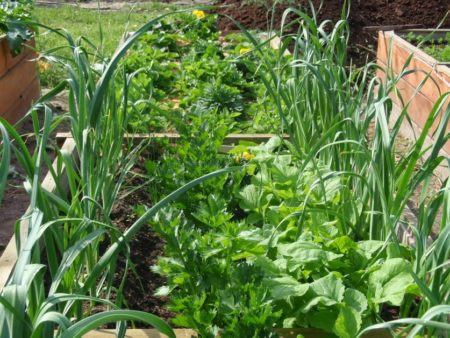
Procedures for caring for winter garlic will not cause trouble. One of the features of culture is the ability to deter harmful insects and moles; these pests do not tolerate the smell of onion plants. Of course, it is better to plant winter garlic separately, but if there is no free space on the site, flowers, for example, tulips, gladioli, roses or daffodils, will be good neighbors for garlic. Garlic has a positive effect on their development and, in addition, is able to protect their appearance of spotting. Also, good neighbors for him will be:
- gooseberry;
- currant;
- raspberry;
- wild strawberries;
- potatoes;
- onion crops;
It is not recommended to plant garlic on the same bed with cabbage or legumes; it is believed that it inhibits the growth of these crops. But as predecessors for him, cabbage and legumes are perfect.
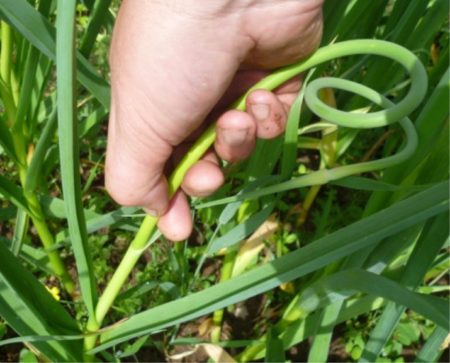
Additional methods for caring for garlic include timely removal of shooters, with plentiful shooting, crop yields can significantly decrease. The main number of arrows break out after 5-7 days after their appearance, in order to get bulbs on several plants arrows leave. Also, during the period of intensive growth of bulbs, it is recommended to dig a little soil, this will stimulate the formation of husks. This procedure can be performed simultaneously with weeding and loosening.
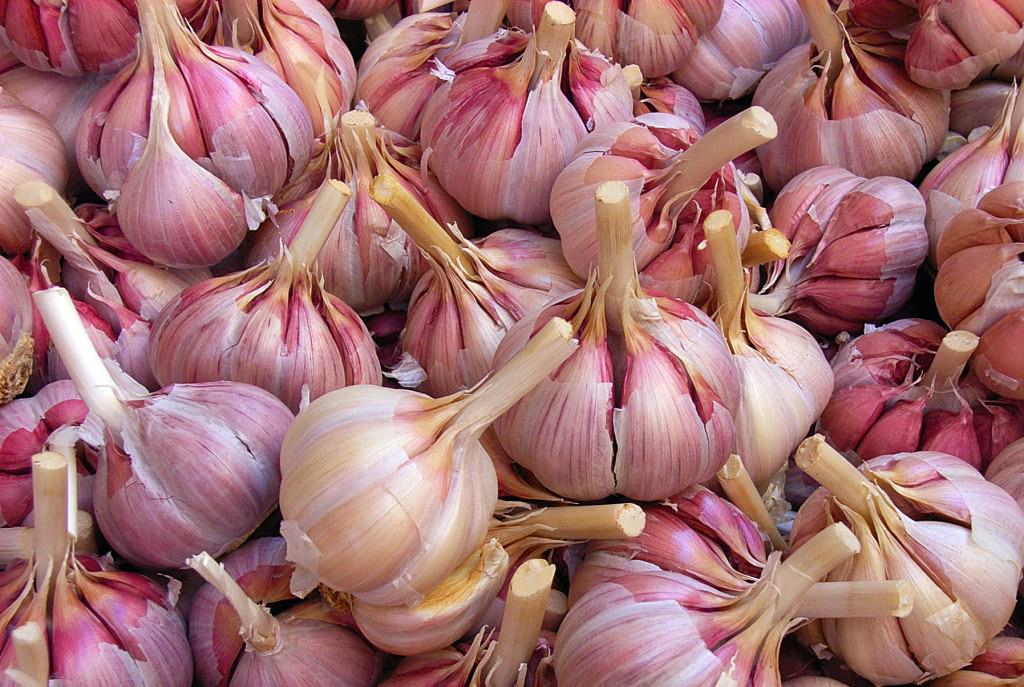 You may be interested in:
You may be interested in:Conclusion
Even a beginner in agriculture can cope with the cultivation of garlic. The main thing is to take into account all the features of the plant and observe agricultural technology. When to plant winter garlic in 2018 can be found on the lunar calendar, it is not hard to find on the Internet. Harvesting need to be carried out in a timely manner, when overriding, it loses its presentation.

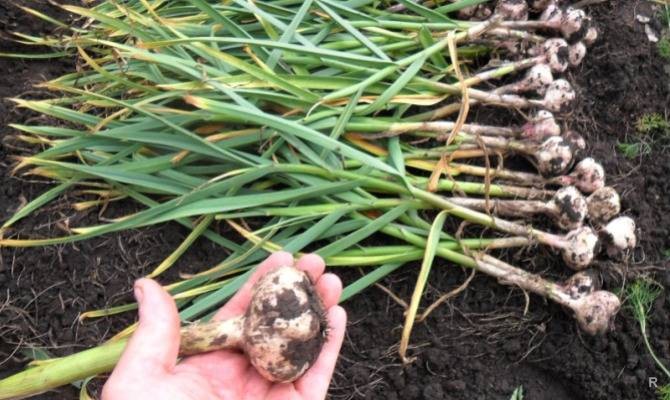
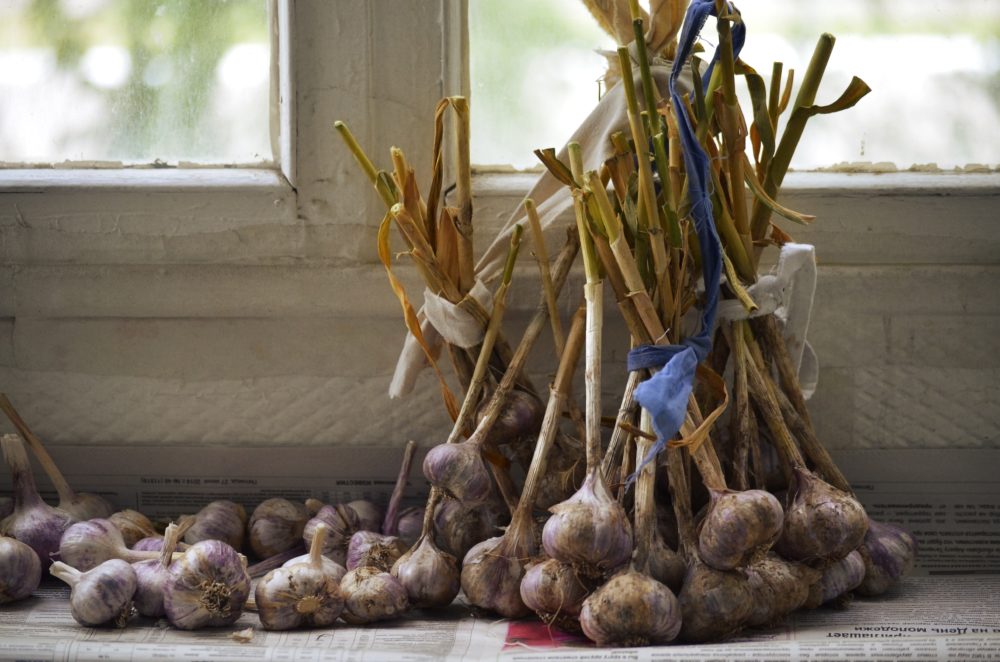
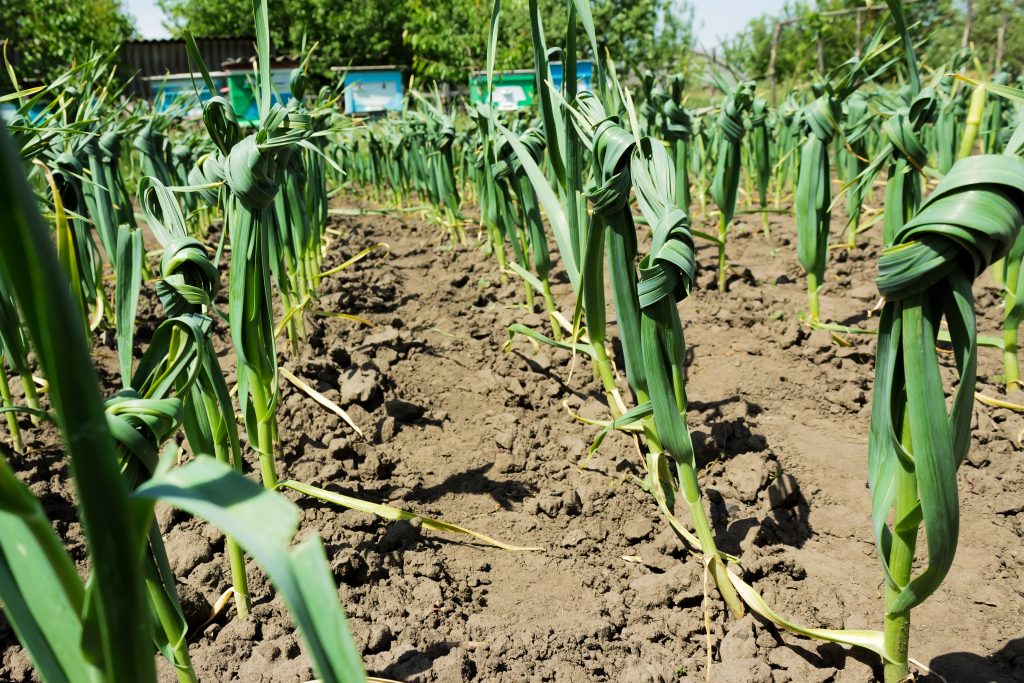
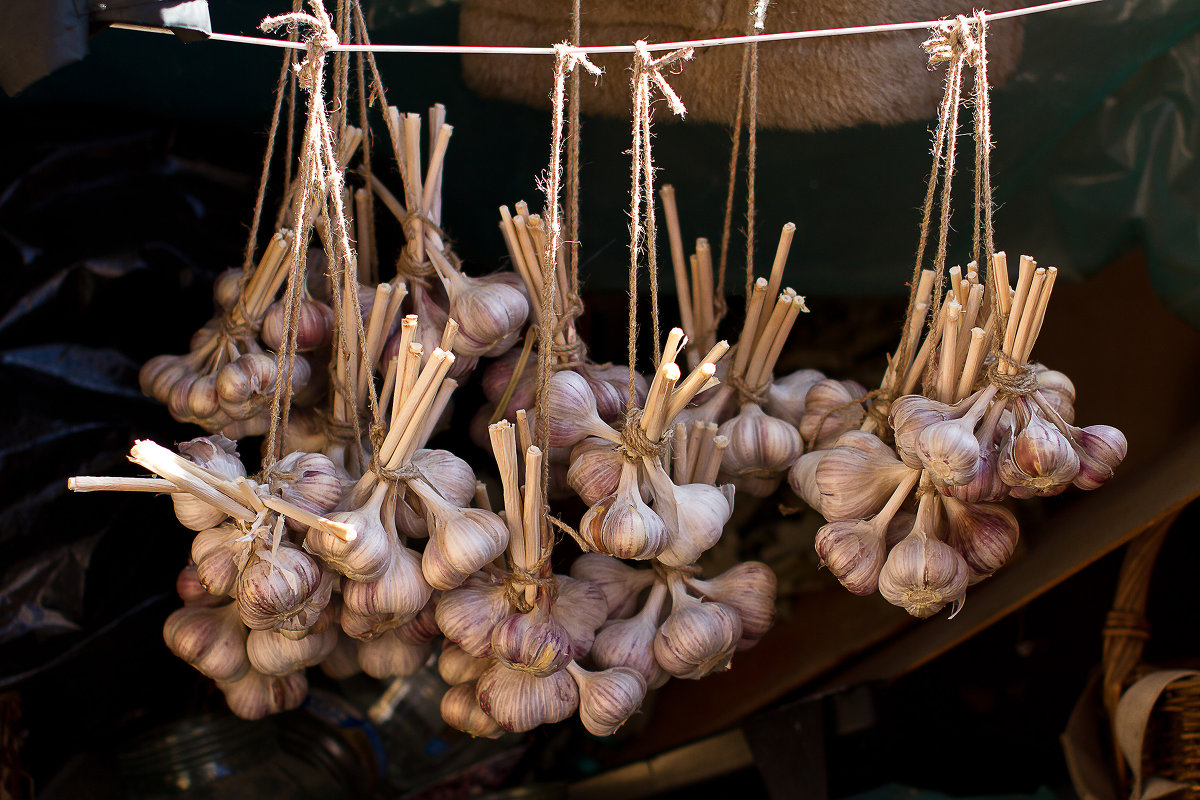 Methods for storing garlic in the winter at home
Methods for storing garlic in the winter at home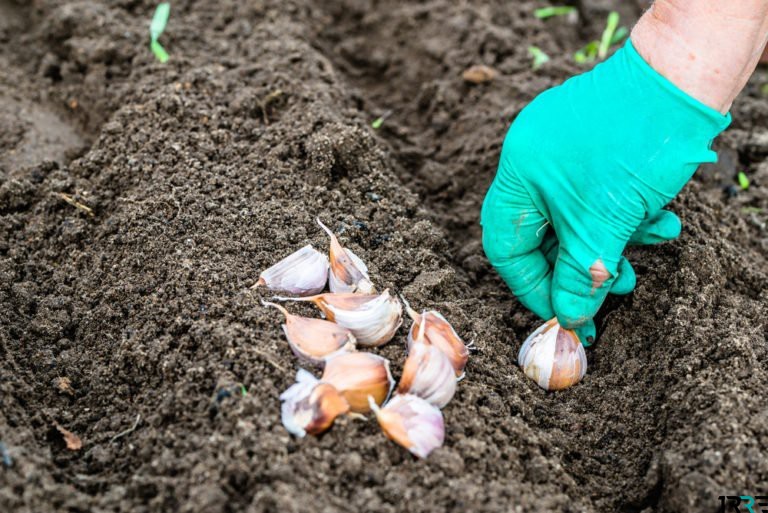 Processing garlic before planting in the winter: soaking garlic and tillage
Processing garlic before planting in the winter: soaking garlic and tillage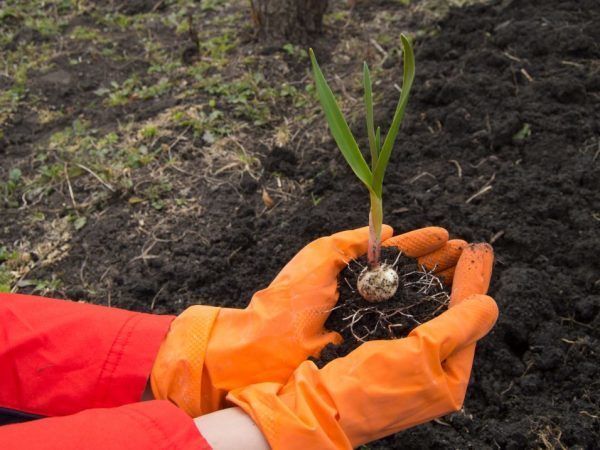 Fertilizers when planting garlic in the fall: how to fertilize the soil
Fertilizers when planting garlic in the fall: how to fertilize the soil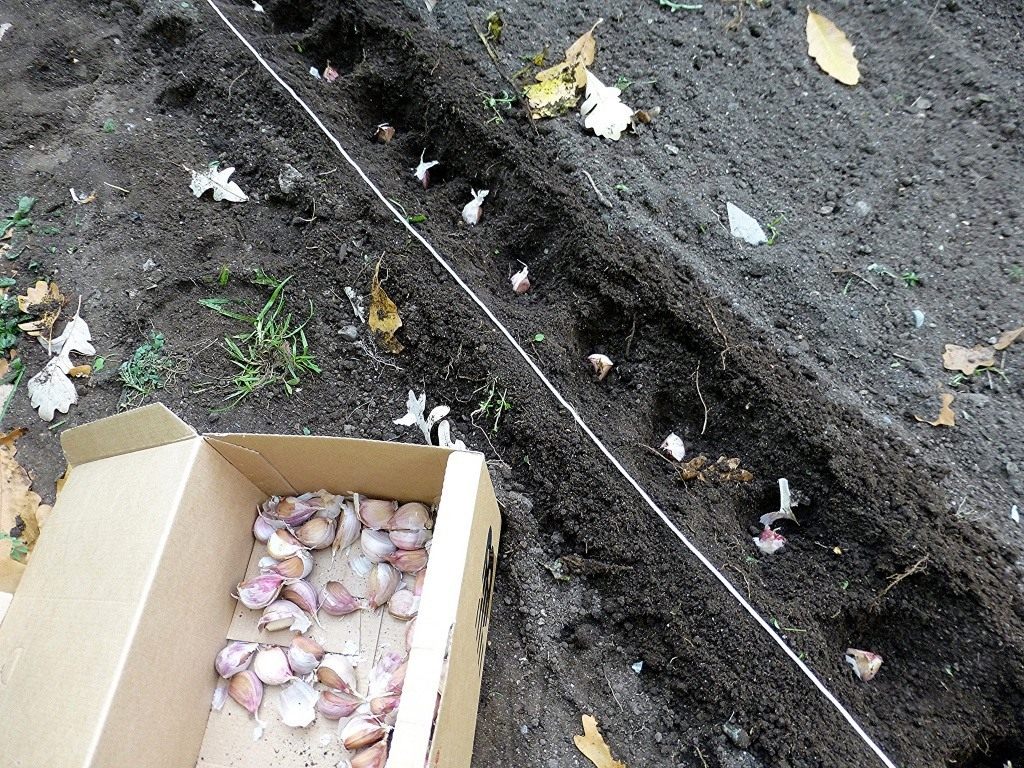 Features planting garlic in the winter in the fall
Features planting garlic in the winter in the fall